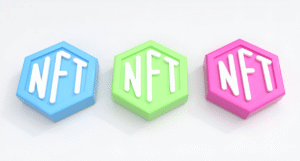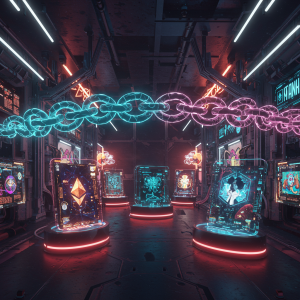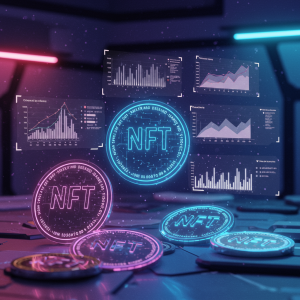Why Are People Against NFT? Understanding the Complex Opposition

Non-fungible tokens have sparked one of the most polarizing debates in modern digital culture. While proponents celebrate NFTs as revolutionary technology for digital ownership and artist empowerment, critics raise serious concerns about their environmental impact, speculative nature, and potential for exploitation.
The opposition to NFTs stems from multiple legitimate concerns that extend beyond simple misunderstanding or resistance to new technology. Many critics possess deep knowledge of blockchain technology and digital markets, yet still maintain strong reservations about NFT adoption and promotion.
Understanding these criticisms helps explain why NFT adoption has faced significant resistance despite substantial media attention and celebrity endorsements. The concerns range from technical limitations to philosophical objections about digital ownership and value creation.
This opposition has influenced public perception, regulatory discussions, and market dynamics in ways that continue shaping the NFT landscape today.
Environmental Impact Concerns
One of the most frequently cited criticisms of NFTs relates to their environmental footprint, particularly when minted on energy-intensive blockchain networks like Ethereum’s original proof-of-work system.
The carbon emissions associated with blockchain transactions became a rallying point for environmental activists and climate-conscious consumers. Critics argued that creating, buying, and selling digital artwork shouldn’t require the energy consumption equivalent to powering homes for weeks or months.
Artists who initially embraced NFTs as new revenue streams sometimes reversed course after learning about environmental impacts. High-profile artists publicly withdrew from NFT projects, citing concerns about contributing to climate change through their digital art sales.
The criticism intensified when environmental researchers published studies quantifying the carbon footprint of individual NFT transactions. These reports provided concrete data that opponents used to argue against NFT adoption on environmental grounds.
While newer blockchain networks have adopted more energy-efficient consensus mechanisms, the early environmental concerns created lasting negative associations that continue influencing public opinion about NFTs.
The timing of peak NFT popularity coincided with increased global awareness of climate issues, making environmental arguments particularly resonant with younger demographics who represent key NFT target audiences.
Speculation and Market Manipulation
The rapid price appreciation of high-profile NFT collections attracted criticism about speculative bubbles and market manipulation rather than genuine appreciation for digital art or utility.
Critics observed that many NFT buyers seemed motivated primarily by potential profits rather than artistic appreciation or technological innovation. This speculation-driven demand created volatile markets that resembled gambling more than sustainable art ecosystems.
The involvement of celebrities and influencers in promoting NFT projects raised concerns about market manipulation and pump-and-dump schemes. When famous individuals promoted projects they were secretly invested in, it created unfair advantages and misled smaller investors.
Wash trading became a documented problem in NFT markets, where individuals or coordinated groups artificially inflated prices by trading assets between accounts they controlled. This manipulation made it difficult for genuine buyers to assess fair market values.
The concentration of high-value sales among a small number of collectors led to accusations that NFT markets were controlled by wealthy individuals who could manipulate prices and create artificial scarcity.
Stories of individuals losing significant money on NFT investments that became worthless reinforced perceptions that the market was primarily speculative rather than based on genuine value creation.
Technical Limitations and Misconceptions
Many NFT critics point to fundamental technical limitations that contradict common marketing claims about digital ownership and permanence.
The distinction between owning an NFT and owning the underlying content remains confusing to many people. Critics emphasize that purchasing an NFT typically grants a blockchain-recorded claim to a token, not copyright ownership of the associated digital file.
Metadata storage issues create vulnerabilities where NFT-associated images or files could disappear if hosting services shut down or change their policies. This contradicts claims about permanent digital ownership that many NFT projects promote.
Smart contract bugs and security vulnerabilities have led to high-profile thefts and losses in NFT collections. These technical failures undermine confidence in NFT security and permanence claims.
The complexity of blockchain technology makes it difficult for average consumers to understand what they’re actually purchasing when buying NFTs. This confusion creates opportunities for misleading marketing and uninformed purchasing decisions.
Interoperability limitations mean NFTs from one platform often don’t work on others, contradicting promises about universal digital ownership and portability across different systems and applications.
Scams and Fraudulent Projects
The NFT space has attracted numerous scammers and fraudulent projects that exploit consumer confusion and FOMO (fear of missing out) to steal money from unsuspecting buyers.
Rug pulls, where project creators disappear with investor funds after initial sales, became common enough to warrant their own terminology in NFT communities. These scams damaged trust in legitimate projects and the broader NFT ecosystem.
Art theft became a significant problem when scammers minted NFTs of artwork they didn’t create or own. Original artists found their work being sold without permission, often with little recourse for protection.
Fake celebrity endorsements and deepfake technology enabled sophisticated scams where criminals impersonated famous individuals to promote fraudulent NFT projects to their followers.
Phishing attacks targeting NFT collectors became increasingly sophisticated, with scammers creating fake marketplaces and social media accounts to steal valuable collections from victims.
The prevalence of these scams led many potential buyers to avoid the entire NFT space rather than risk falling victim to fraudulent schemes.
Cultural and Philosophical Opposition
Beyond technical and financial concerns, many critics object to NFTs on cultural and philosophical grounds related to art, ownership, and digital culture.
Traditional art communities often view NFTs as commercializing digital art in ways that prioritize speculation over artistic merit. This criticism suggests NFTs reduce art to investment vehicles rather than cultural expressions.
The concept of artificial scarcity in digital environments strikes many critics as philosophically problematic. They argue that digital files should remain freely copyable and shareable rather than artificially restricted through blockchain technology.
Some critics view NFT culture as promoting materialistic values that conflict with the open, collaborative nature of internet culture. The emphasis on exclusive ownership seems antithetical to sharing and remix culture that defined early digital communities.
The association between NFTs and cryptocurrency culture alienates people who view crypto as speculative, environmentally harmful, or socially divisive. This guilt by association affects NFT perception even when specific projects address underlying concerns.
Generational differences in attitudes toward digital ownership and value creation contribute to cultural resistance. Older generations may struggle to understand digital ownership concepts, while younger ones might reject them as artificial constructs.
Economic Inequality and Accessibility
Critics argue that NFTs exacerbate economic inequality by creating new ways for wealthy individuals to profit while excluding average people from participation or benefit.
High transaction fees on popular blockchain networks make it expensive for artists to mint NFTs or for collectors to purchase lower-priced works. These barriers favor wealthy participants over emerging artists or modest collectors.
The concentration of high-value NFT sales among celebrity artists and established collectors creates perception that NFTs primarily benefit those who are already financially successful rather than democratizing art markets.
Gas wars, where buyers compete by paying higher transaction fees during popular NFT drops, favor wealthy participants who can afford to outbid others for processing priority.
The complexity of NFT technology requires significant time investment to understand, creating advantages for people with leisure time to research and learn over those working multiple jobs or caring for families.
At NFT Marketo, we’ve observed how these accessibility concerns have influenced public perception and adoption patterns across different demographic groups.
Legal and Regulatory Uncertainties
The unclear legal status of NFTs in many jurisdictions creates concerns about future regulatory crackdowns or legal challenges that could affect NFT value or ownership rights.
Intellectual property law struggles to address NFT ownership claims, creating uncertainty about what rights buyers actually acquire when purchasing tokens associated with copyrighted works.
Securities regulations may apply to some NFT projects, particularly those promising future utility or returns on investment. This regulatory uncertainty creates risks for both creators and buyers.
Tax implications of NFT transactions remain unclear in many jurisdictions, creating potential problems for people who fail to properly report gains or losses from NFT trading activities.
Cross-border legal complications arise when NFT transactions involve parties in different countries with varying regulations about digital assets, intellectual property, and consumer protection.
Market Saturation and Quality Concerns
The explosion of NFT creation led to market oversaturation with low-quality projects that damaged perception of the entire space.
The ease of creating NFTs resulted in millions of tokens being minted, most of which attracted little interest or value. This oversupply made it difficult for quality projects to stand out and succeed.
Many NFT collections consisted of algorithmically generated variations of simple designs rather than original artwork, leading to criticism about lack of creativity and artistic merit.
The focus on profile picture (PFP) collections created repetitive market segments that many critics viewed as lacking innovation or cultural significance beyond status signaling.
Celebrity cash-grab projects, where famous individuals launched low-effort NFT collections primarily to profit from their fame, reinforced perceptions about opportunistic exploitation of fan loyalty.
Technical Complexity and User Experience
The complexity of interacting with NFT marketplaces and blockchain technology creates barriers that frustrate potential users and reinforce negative perceptions about accessibility.
Wallet setup, seed phrase management, and private key security requirements overwhelm many potential users who lack technical expertise or comfort with cryptocurrency concepts.
Transaction failures, network congestion, and high gas fees create poor user experiences that contrast sharply with smooth interfaces people expect from modern digital services.
The irreversible nature of blockchain transactions means mistakes can result in permanent losses, creating anxiety and reluctance among risk-averse potential users.
Multiple competing blockchain networks and marketplaces create confusion about where to buy, sell, or store NFTs, fragmenting the user experience and increasing complexity.
Long-term Sustainability Questions
Critics question whether current NFT models can sustain long-term value or utility beyond speculative trading and status signaling among early adopters.
The lack of clear utility for most NFTs beyond bragging rights raises questions about sustainable demand once speculative interest fades.
Technological advancement may make current NFT standards obsolete, potentially rendering existing collections less valuable or functional over time.
The dependence on continued blockchain network operation and marketplace availability creates ongoing risks that traditional collectibles don’t face.
Changing social attitudes toward digital ownership, environmental responsibility, and speculative investing could reduce future demand for NFT collections.
The opposition to NFTs reflects genuine concerns that extend beyond simple resistance to new technology. Environmental impact, speculative behavior, technical limitations, fraud risks, and cultural conflicts all contribute to widespread skepticism that has shaped public perception and market development.
Understanding these criticisms helps explain why NFT adoption has been more limited than early proponents expected, despite significant media attention and celebrity involvement. Addressing these concerns remains essential for any sustainable development of NFT technology and markets.








